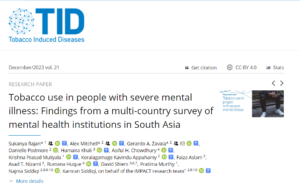This report presents an overview of the COVID-19 response in the country from February to the End of August 2020. It focuses on the response related to urban health in the country and tries to portray the interaction of different stakeholders and the deciding authorities in Covid-19 management in urban areas.
The report is based on a qualitative case study that analysed published documents available online: media report and policy documents. We aimed to describe the scope of existing policies, and health system responses of COVID-19 to understand the differential impact on sub-groups of the urban population.
Government of Bangladesh had started taking necessary steps earlier in the year to prepare the public health facilities in the country. After the first case identified on 8th March 2020, the initiatives were scaled up, and multiple actors both in public and private sector came forward to tackle the pandemic. As a resource-constrained and densely populated area, the country experienced challenges of public compliance, awareness and coordination among different stakeholders.
The COVID-19 spread fast across the country which was reportedly initiated from the urban areas of Dhaka division. The country then experienced 66 days of unofficial lockdown while managing its public and private organisations, and service providers to control the spread of the disease. Different social and technical approaches were taken to tackle the community transmission of the virus such as temporarily closing industries, shutting down all educational institutions, restricting movements, limiting business hours, mandating public safety, building awareness and screening patients.
We found that coordination among different ministries was inadequate. Lack of public compliance and awareness were also challenging while implementing the safety rules on the ground. Confusion, lack of understanding and unregulated implementation of the public notices posed a risk of spreading the virus through travel and gathering. The health ministry was successful in regulating the tests and treatment in the public health facilities; however, the private hospitals were mostly unregulated, and quality of care became questionable. Several initiatives to ensure food security by the government also faced challenges while execution at the local level.
COVID-19 pandemic has challenged the health systems in Bangladesh, especially in urban areas, with inadequate structural and human resources. The role of the local government and city corporations in controlling the spread of the virus faced some challenges due to mismanagement and miscommunication. However, there were successful examples of safety measurements, aid supply, collaboration and communication at the local level coordinated by the local government.
The cross-sectoral collaboration was successful in terms of managing COVID-19 patients and assisting urban poor people during and after the lockdown. The government had announced several financial schemes targeting the small business and poor people suffering from income loss during the lockdown. However, the findings suggest that the distribution of aid and cash incentives often did not reach the target groups.
The livelihoods of the urban poor were mostly affected during the lockdown period; addressed by both public and private organisations by distributing food and cash to the most affected areas. The middle-class population also suffered a loss of income in urban areas. Some vulnerable groups such as children and disabled people were still suffering the economic effects months after the lockdown was lifted.
There were both strengths and weaknesses in the health system response against COVID-19, learning from which will be useful in planning and implementing responsive initiatives to tackle future health crises in the country.
Read the full report here: https://chorusurbanhealth.org/wp-content/uploads/2021/05/Bangladesh-Covid-and-Cities-Report.pdf



